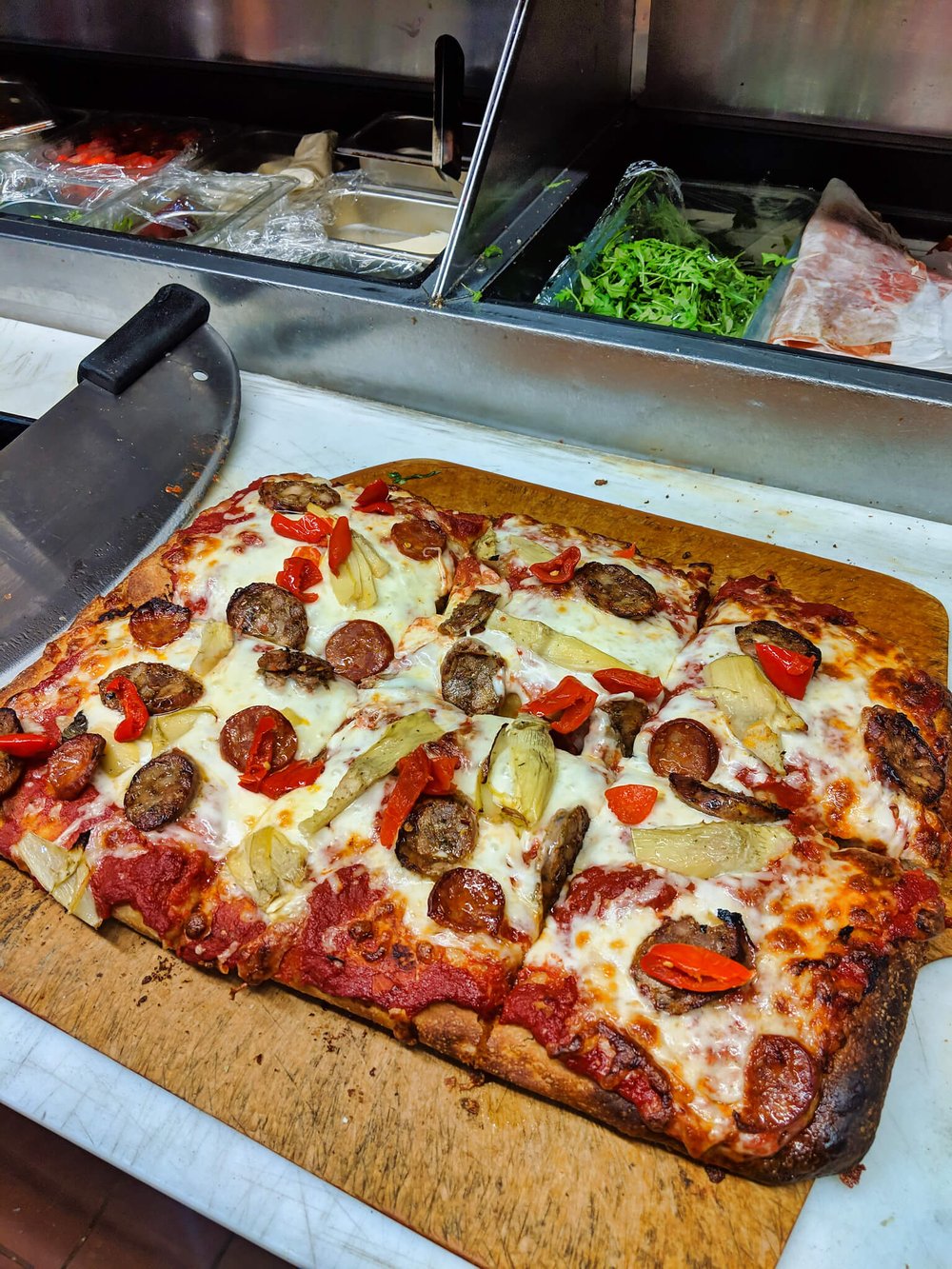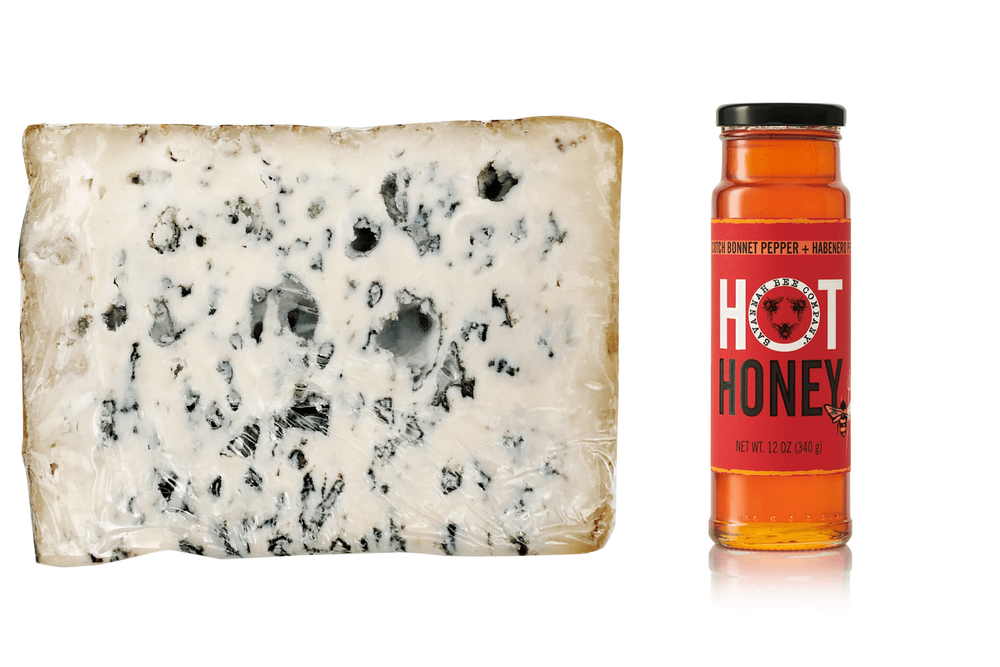“Tony Gemignani’s International School of Pizza” by dalecruseis licensed under CC BY 2.0. with linked credit
“I have been using Cholula hot sauce on my pizzas for nearly 30 years,” says Tony Gemignani, award-winning pizzaiolo of San Francisco’s Tony’s Pizza Napoletana and author of “The Pizza Bible.” “Cholula has a combination of árbol and piquín peppers that brings a deliciously distinct and memorable flavor. It beautifully pairs with cheeses such as mozzarella, Parmigiano Reggiano, asiago, aged Cheddar, and smoked provolone, which are go-to cheeses in the pizza industry.”
Listen, if it’s good enough for a 13-time world pizza title winner, there must be something to it. If you can relate to the impulse for putting hot sauce on pizza, or if you’ve ever similarly doused mac and cheese with Sriracha or dunked a spicy buffalo wing in an ample amount of blue cheese, or a quesadilla in a more-than-mild salsa, then you already understand that cheese and hot sauce can play very nicely together. But should they only be limited to coming together when there’s a base of chicken, pasta, or dough? Perhaps hot sauce can have a place on your cheese board like any other cheese enhancing condiment such as jam or honey.
As an instructor at NYC’s Murray’s Cheese, we often discuss cheese and its beverage or accoutrement pairings in terms of how they fit into 3 different “pairing principle” categories: contrasting elements or “opposites attract,” like with like elements, or terroir-driven pairings, where the cheese and its accompaniment share a regional pedigree. To establish some guidelines for how to approach pairing cheese and hot sauce, I queried a number of cheese professionals and enthusiasts for their favorite cheese and hot sauce combos, and sorted them according to these traditional pairing principles.
Hot Sauce for Contrast

With cheese being a rich dairy product, and hot sauce typically made with ground chili peppers with varying doses of vinegar, it would follow that most cheese and hot sauce pairings fit nicely into the contrast category.
The contrasting characteristics of cheese and hot sauce, however, need not only end with sweet versus savory, and fat versus vinegar. Jessica Fernández, Head Cheesemonger at Mexico City’s Lactography and founder of Mexican Mongers, points out that, “hot sauce can develop really nice layers of flavor and texture depending on the pepper used and the technique for extracting the spiciness,” as well as other elements that may be included in the sauce such as garlic, herbs, or other flavoring elements, all of which can provide contrasting, (or mirroring, in the following case,) elements to the salient characteristics of various cheeses.
Beth Welsh, Cheesemonger at Greensboro NC’s Lewis & Elm offers a pairing that contrasts both flavors and textures: Mt Tam and Fly by Jing Sichuan Chili Crisp. Mt Tam is a cow’s milk triple crème by Cowgirl Creamery, whose subtly sweet and buttery paste, due to curd washing to lower its acidity, is a perfect canvas to soften the sichuan pepper bite of Chili Crisp. In addition to the contrasting flavors of this inspired pairing, the supple fudginess of Mt Tam also creates an appealing contrast texturally, providing the perfect counterpoint for the eponymous “crisp” of the hot sauce.
Fighting Fire with Fire: Like-with-Like Cheese and Hot Sauce Pairings

Blue cheese doesn’t so much cool the heat from buffalo wings as amplify it, demonstrating a like-with-like pairing when it comes to cheese and hot sauce. What is blue cheese, if not sweet and spicy, with its rich, nutty paste streaked with piquant, peppery blue mold? The magical combination of butter and hot sauce offers the same notes in the wings themselves; they echo each other, and so both components sing a little louder in the presence of the other.
Aptly, Michelle Stevens, owner of Buffalo Cheese Traders, flips the script of wings with blue cheese by suggesting blue cheese, specifically Cambozola Black Label, with Frank’s RedHot, the hot sauce employed in the making of Buffalo’s original wings. “I also regularly serve Mike’s Hot Honey with an assortment of cheeses, especially blues,” she says, for another play on the winning sweet/spicy combo. For real heat seekers, try Savannah Bee’s Hot Honey, which brings both habanero and Scotch bonnet peppers into the mix, with an especially peppery blue such as Valdeón.
Consider also that pairings with similar notes can be built by matching add-ons within the cheeses and hot sauces themselves: Beehive’s Barely Buzzed with Señor Lechuga’s similarly coffee-spiked .507 hot sauce, Barnacle Food’s Bullwhip Kelp Hot Sauce with Lakin’s Gorge seaweed-striped Rockweed, or a smoky, chipotle-driven hot sauce with Grafton Village Maple Smoked Cheddar.
What Grows Together…Geography-Driven Cheese and Hot Sauce Pairings

Terroir-based pairings in cheese and wine are driven by the idea that the same soil used to grow the grass that feeds the herd, as well as grow the grapes that made the wine, results in some DNA embedded in both products that make for a harmonious pairing. Burgundy wine with Burgundy-based Époisses, for example.
While the peppers that make hot sauce don’t always grow in climates where grazing animals typically thrive, there are nonetheless ways to employ terroir-based principles in a hot sauce and cheese pairing.
Tina McGarry Mooney, of Fort Collins’ The Fox and the Crow, says, “We just did an insane hot sauce pairing with coconut gouda and a Thai-inspired hot sauce,” with both the cheese and hot sauce emphasizing flavors that would be common to Thai cuisine. Jeff Kampa, a Midwest-based cheese enthusiast, offers some local Minnesota love with a marriage between Redhead Creamery’s Lucky Linda Clothbound Garlic Cheddar and Cry Baby Craig’s Gourmet Hot Sauce both of which contain garlic. Even France has a version of hot sauce with rouille, and Italy has Firelli, made with Calabrian chilies, which should probably make its way to your pizza sooner than later.
